St. MIHIEL SALIENT - Butte de Montsec - Flirey - Rémenauville
- by duda-wsm
- •
- 18 Apr, 2019
- •
Year of visit: 2006
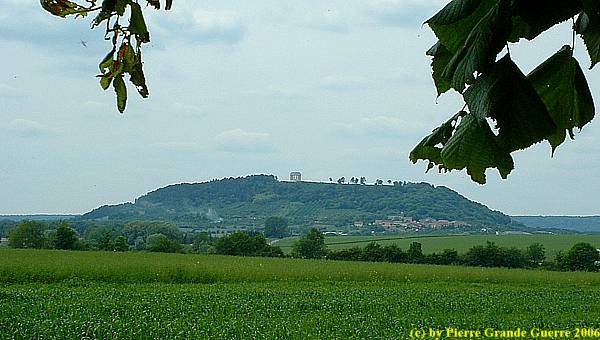
We depart from the German shelters in the quarry of Apremont, and we continue to the Butte de Montsec, centrepoint of the St. Mihiel Salient, to finish at Regniéville near Thiaucourt and the destroyed village of Rémenauville. We try to follow one of the movements of the American Division and (the later) General Patton in 1918.
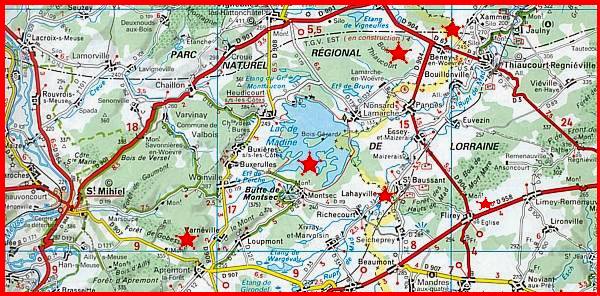
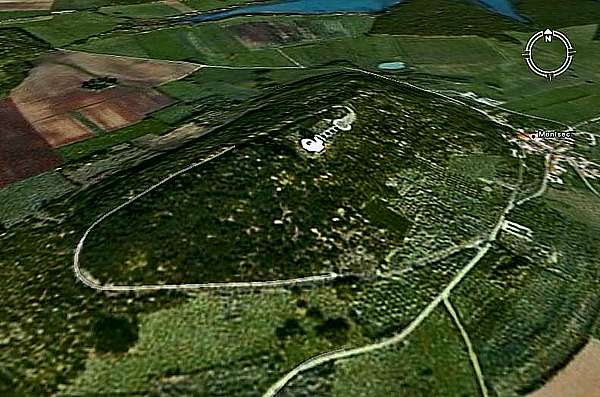
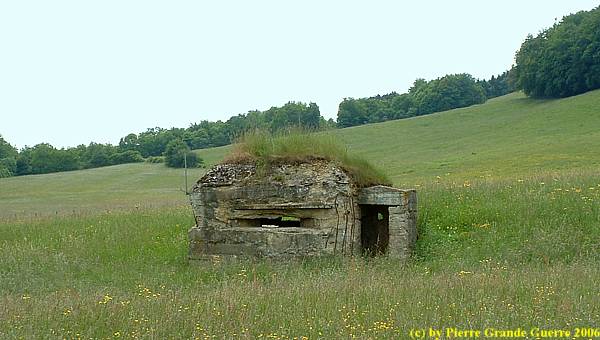
The hillsides of Montsec was made into a huge fortress with many tunnels, barbed wire networks, and machine gun bunkers, like this one.
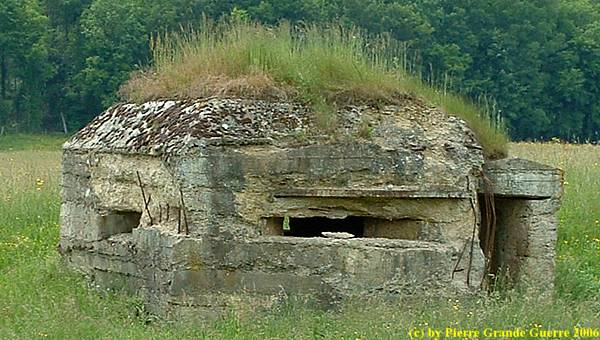
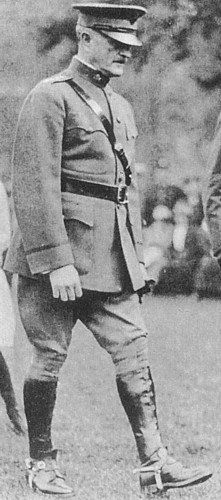

The offensive opened with an artillery bombardment of 4 hours with almost 3000 guns. After the bombardment, at 05.00 hrs. American soldiers in French Renault tanks and 1500 low flying airplanes opened the ground assault. Within 36 hours the American tanks and infantry eradicated the Germans.
Commander of the American manned Tank Corps was George Patton, the later famous General of the Second World War.
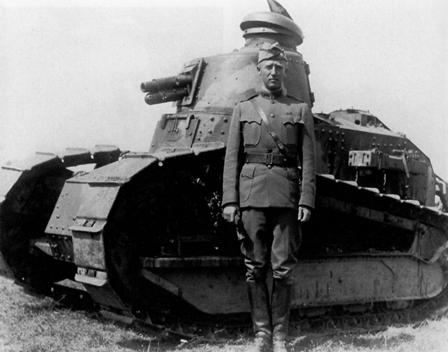
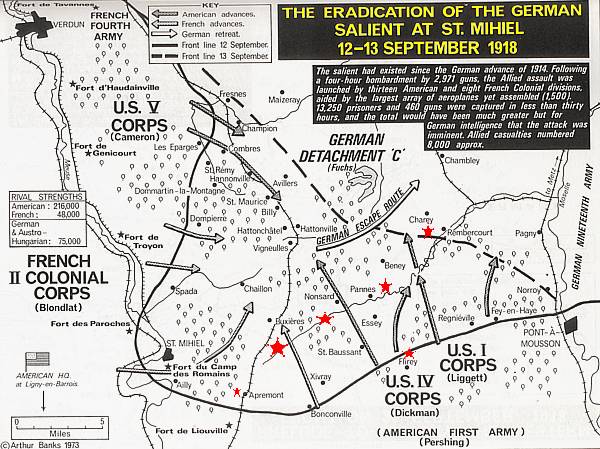
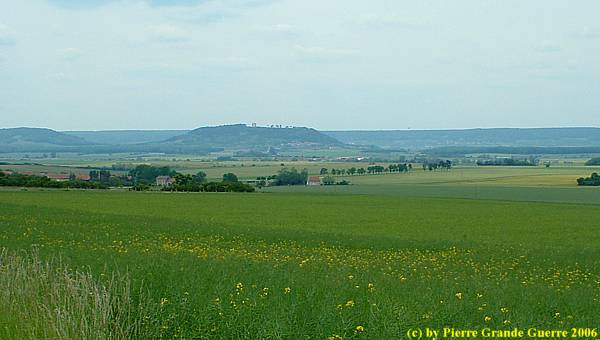
... with the huge American Monument to commemorate the recapture of the St. Mihiel Salient in 1918.

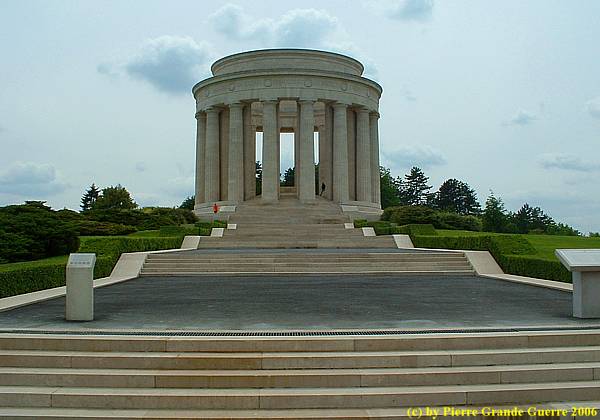
On the inside inscriptions to commemorate the heroic acts of French and American Army Corpses.
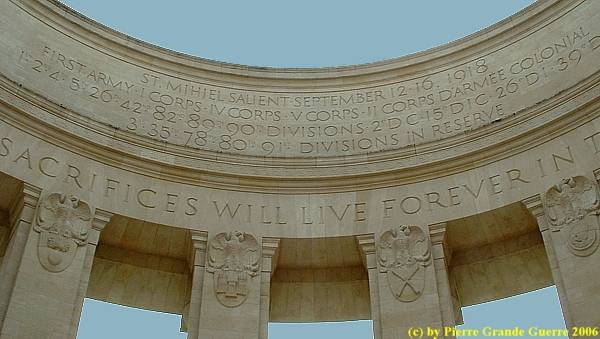
A view from the monument westward, into the direction of St. Mihiel. Notice the golfball pattern on the surface of the grass; shell holes.
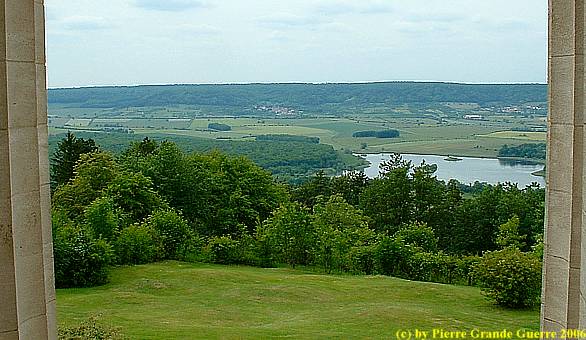
Inside the monument, on a stone plinth is a bronze relief map of the St. Mihiel Salient.

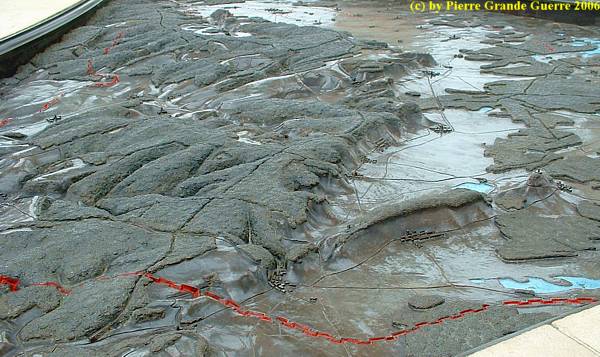
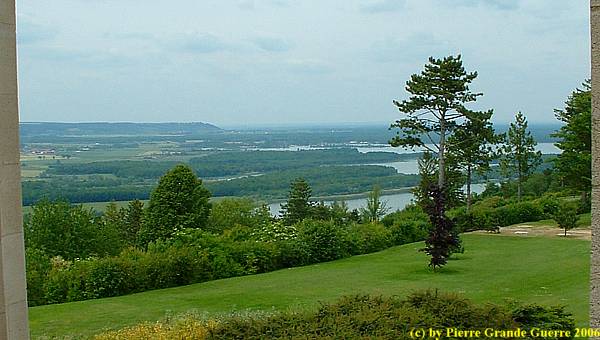
During the Second World War, in 1944, General Patton was forced to recapture the Butte de Montsec again. This time, in on 2 September 1944, it took General Patton 9 days to accomplish his task!
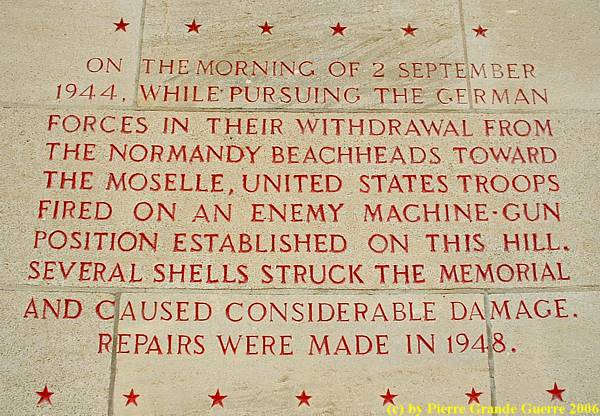
A last view from the monument, southeastward in the direction of Regniéville.
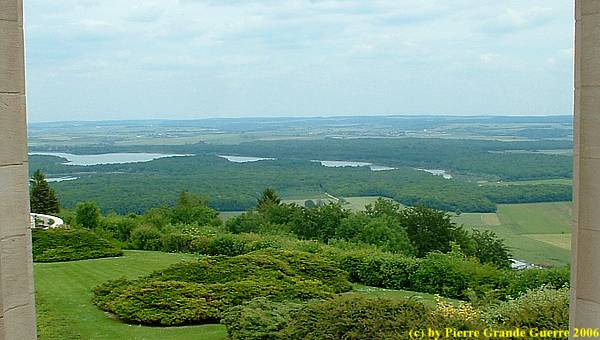
We follow the traces of the American Army along the D 907 through Flirey, where we find two memorials facing each other across the road: A French monument to commemorate the French 163th Infantry Regiment, ...
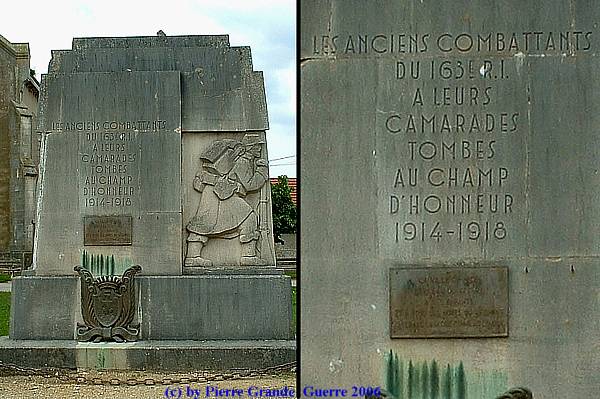
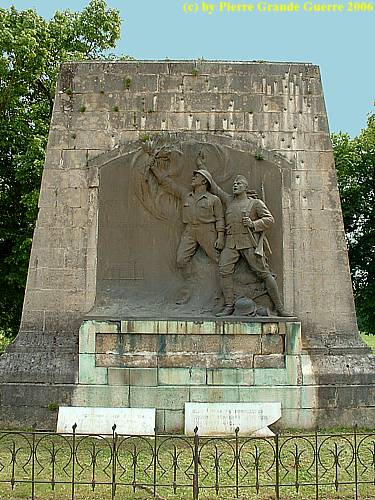
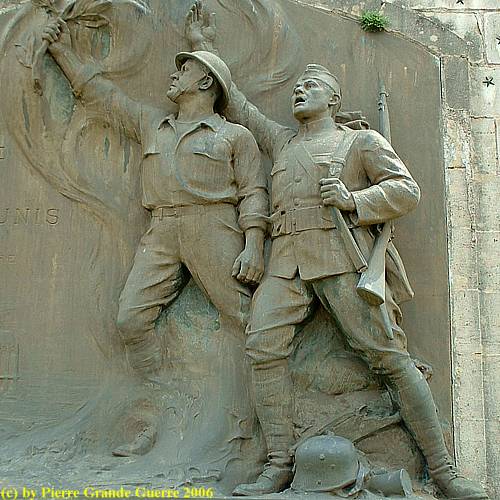
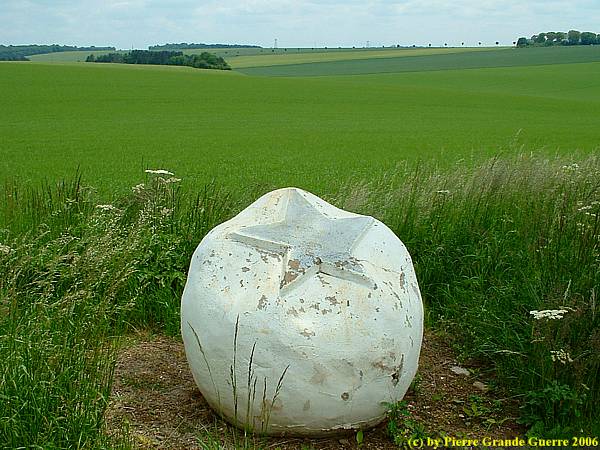
West of Thiaucourt, at the crossing of the D 67 and the D 904, the spot of the destroyed, not longer exisiting, village of Regniéville, we find these 3 memorials: a demarcation stone, marking the end of the Salient.

A French Monument to commemorate the 302nd Infantry Regiment, defending this sector in 1915-1916.
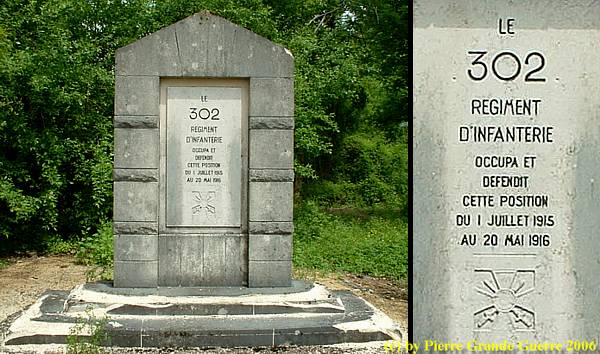
A demarcation obelisque with a red diamond sign commemorating the US 5th Infantry Division, which has been active here in 1918 and as well in 1944.
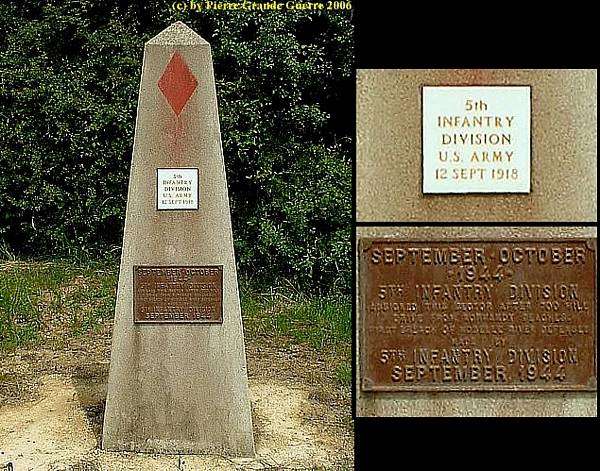
Near this site we enter the woods for the relics of the destroyed village of Rémenauville.

In Thiaucourt Wood we find the relics of the former village of Rémenauville.
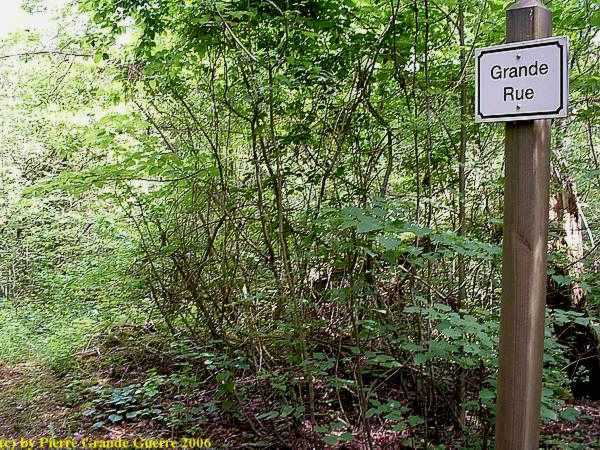
Being in the warzone, the village was completely destroyed in the war like other villages in the Salient, and like other villages around Verdun.

The paths in the wood and some small signs remind of the former streets, the houses, their former owners; crafts men, and their families.
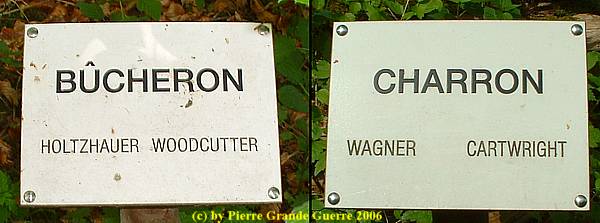
"Churchstreet".
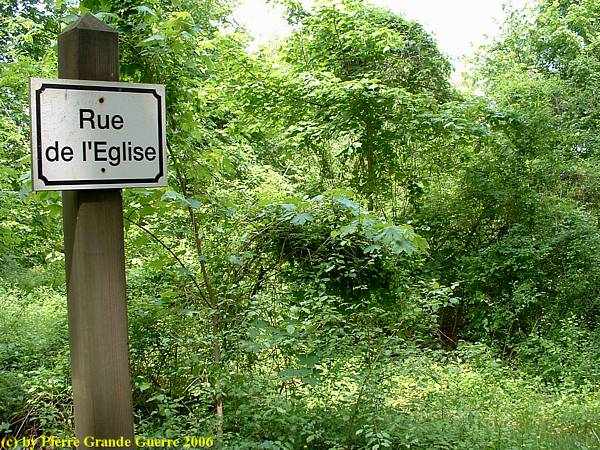
This debris marks the surroundings of the place of the former village church, and the village cemetery.
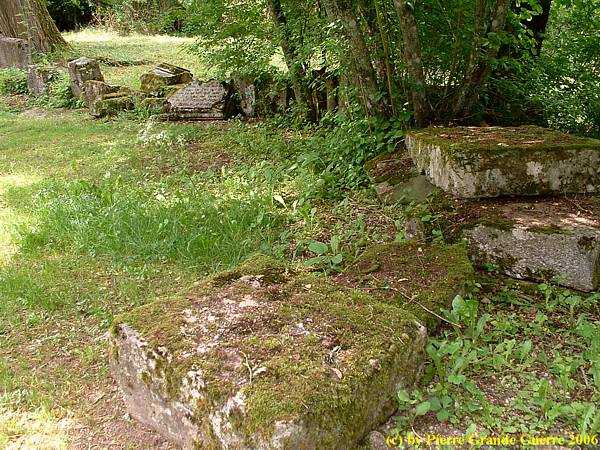
To keep the name of the village, Rémenauville, alive forever,...
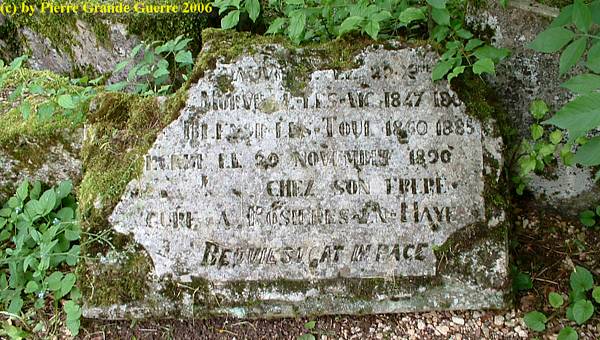
... the former inhabitants raised a small chapel.
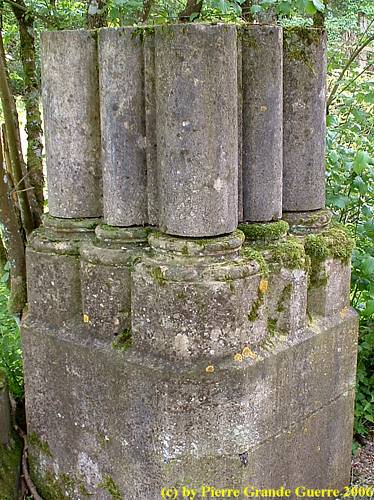
A list outside on the chapel wall commemorates ...
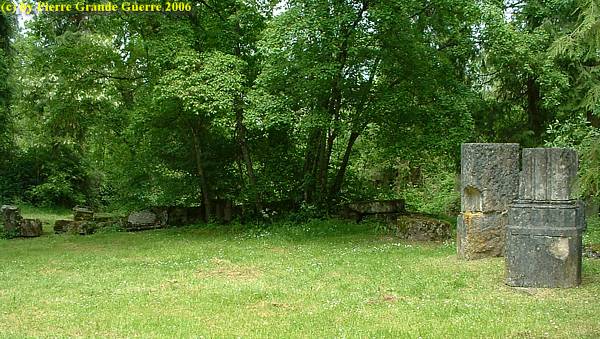
... the Remenauville citizens, who were buried here in the village cemetery.
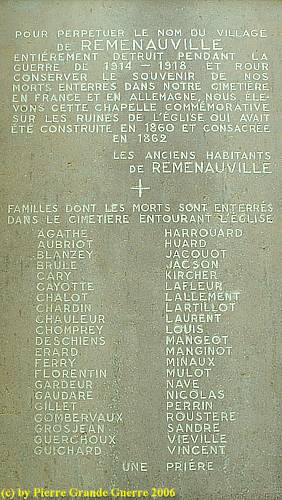
“TO IMMORTALIZE THE NAME OF THE VILLAGE OF REMENAUVILLE, TOTALLY DESTROYED DURING THE WAR OF 1914-1918, AND TO CONSERVE THE MEMORY OF OUR DEAD PERSONS, BURIED IN OUR CEMETERY, IN FRANCE AND IN GERMANY, WE ERECTED THIS MEMORIAL CHAPEL ON THE RUINS OF THE CHURCH, WHICH HAS BEEN BUILT IN 1860 AND CONSECRATED IN 1862.
THE ANCIENT CITIZENS OF REMENAUVILLE.
+
FAMILIES OF PEOPLE WHO ARE BURIED IN
THE CEMETERY AROUND THE CHURCH.
(followed by a list of family names and ending with: “A PRIEST”)”
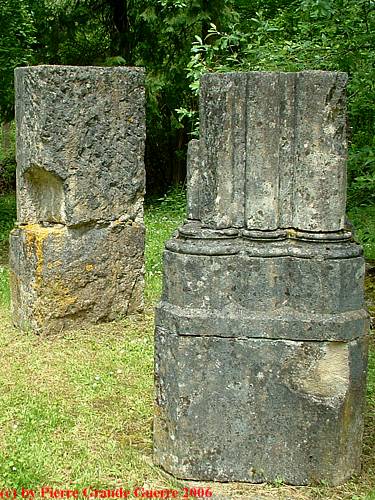
We finish this trip at this horrifying place that reminds us of the bitter fate, French citizens had to suffer during the war.
Continue to the next chapter: "Bois le Prêtre / Priesterwald - Fey-en-Haye Destroyed Village - Kühlewein Brunnen - Vilcey-sur-Trey"

Inleiding: Franz Von Papen & Werner Horn; schaker en pion
Onlangs stuitte ik in een oud boek (1) van 1919 op een opmerkelijk verhaal over een Duitse Luitenant, die in begin februari 1915 een half geslaagde bomaanslag pleegt op een spoorbrug over een grensrivier tussen de Verenigde Staten en Canada. Ook al staat de bekentenis van de dader, Werner Horn, deels in het boek te lezen, de naam van zijn opdrachtgever zal Horn blijven verzwijgen. Na wat verder zoeken vond ik ook de naam van Horn’s opdrachtgever, Franz von Papen, een van de aangeklaagden van het latere Neurenberg Proces in 1946.
In een Grote Oorlog als de Eerste Wereldoorlog is Horn’s aanslag op de brug uiteraard slechts een bescheiden wapenfeit. Toch vermoed ik dat dit relatief onbekende verhaal, dat de geschiedenis is ingegaan als de “ Vanceboro International Bridge Bombing ”, nog interessante kanten kent. Het is onder andere een spionageverhaal over hoe in een groter plan een sluwe schaker zijn naïeve pion offert.
Beknopte situatieschets Canada en de Verenigde Staten in 1915

This trip we start at the Léomont near Vitrimont and we will with some exceptions concentrate on the Battle of Lorraine of August-September 1914 in the area, called, the “Trouée de Charmes”, the Gap of Charmes.
After the Léomont battlefield we continue our explorations to Friscati hill and its Nécropole Nationale. Next we pay a visit to the battlefield of la Tombe to go on to the Château de Lunéville. There we cross the Vezouze to move on southward to the Bayon Nécropole Nationale. At Bayon we cross the Moselle to pass Charmes for the panorama over the battlefield from the Haut du Mont. North-west of Charmes we will visit the British Military Cemetery containing 1918 war victims. From Charmes we go northward to the battlefield of the First French Victory of the Great War, the Battle of Rozelieures of 25 August 1914. North of Rozelieures we will visit the village of Gerbéviller. From there we make a jump northward to visit the ruins of Fort de Manonviller to finish with an interesting French Dressing Station bunker, west of Domjevin.


During this visit, we try to focus on the day that the momentum of the battle switched from the French side to the advantage of the Bavarian side: the day of 20 August 1914, when the Bavarians rapidly re-conquered the territory around Morhange , being also the day of the start of their rather successful “Schlacht in Lothringen”.
We will visit beautiful landscapes of the "Parc Naturel Régional de Lorraine", memorials, ossuaries, and cemeteries. Sometimes we will divert to other periods of the Great War, honouring Russian and Romanian soldiers, who died in this sector. We start our route at the border village of Manhoué, and via Frémery, Oron, Chicourt, Morhange, Riche, Conthil, Lidrezing, Dieuze, Vergaville, Bidestroff, Cutting, Bisping we will finish in Nomeny and Mailly-sur-Seille, where the Germans halted their advance on 20 August 1914, and where they constructed from 1915 some interesting bunkers.














